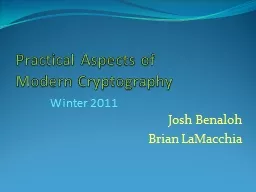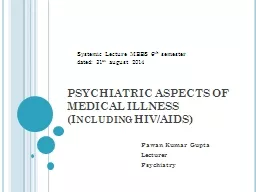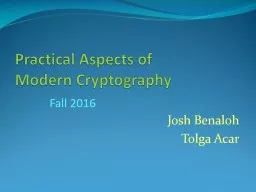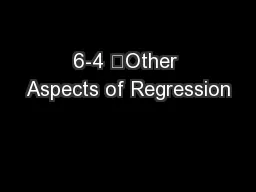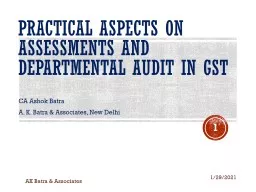PPT-Practical Aspects
Author : natalia-silvester | Published Date : 2016-03-12
of Modern Cryptography Josh Benaloh Brian LaMacchia Winter 2011 Agenda Integrity Checking HMAC redux Protocols Part 1 Sessionbased protocols Introduction Kerberos
Presentation Embed Code
Download Presentation
Download Presentation The PPT/PDF document "Practical Aspects" is the property of its rightful owner. Permission is granted to download and print the materials on this website for personal, non-commercial use only, and to display it on your personal computer provided you do not modify the materials and that you retain all copyright notices contained in the materials. By downloading content from our website, you accept the terms of this agreement.
Practical Aspects: Transcript
Download Rules Of Document
"Practical Aspects"The content belongs to its owner. You may download and print it for personal use, without modification, and keep all copyright notices. By downloading, you agree to these terms.
Related Documents

